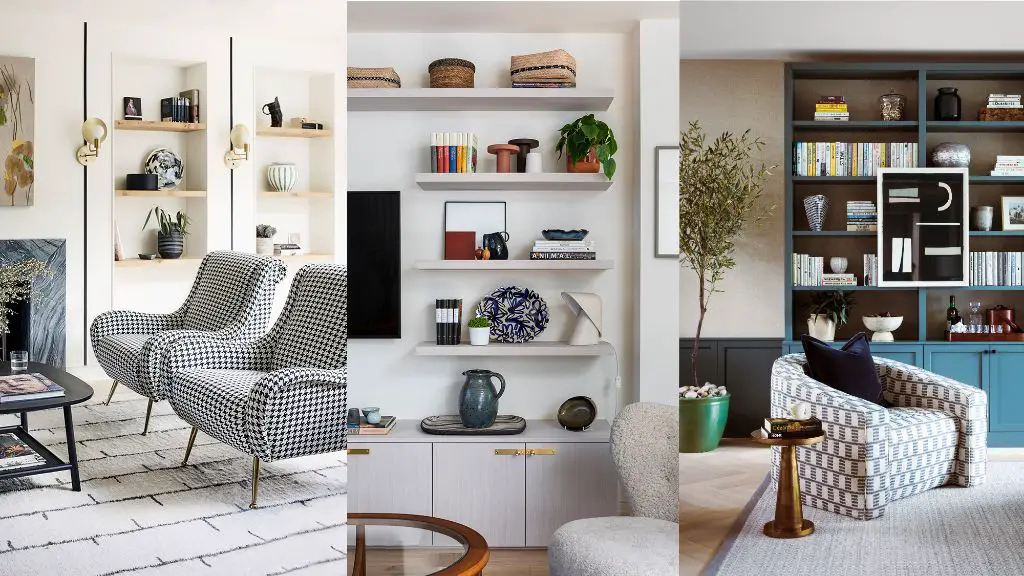What Is In The Book Shelf?
A bookshelf is a piece of furniture used to store and display books. The main purpose of a bookshelf is to provide convenient, organized storage for a book collection. Bookshelves allow book lovers to proudly display and access their favorite reads with ease. They come in a variety of styles and sizes to suit the needs of the user. From practical storage solutions to decorative display pieces, bookshelves are an essential item for any home library or book collection.
Bookshelves serve both functional and aesthetic purposes. On the functional side, they keep books organized and free of dust and damage. The open shelves allow for easy browsing and retrieval. Books are neatly arranged upright, with their spines facing outwards for quick identification. On the aesthetic side, a filled bookshelf adds warmth and character to a room. The colorful book spines and textures make for an eye-catching display. Bookshelves show off the interests and personality of the owner. They convey intelligence and sophistication. For book lovers, a well-stocked bookshelf is a thing of beauty.
Types of Book Shelves
There are several common types of book shelves used in homes and offices:
Freestanding Bookcases
Freestanding bookcases are complete units that stand on their own without being attached to the wall. They come in a wide variety of sizes, shapes and styles. Freestanding bookcases allow you to create standalone book storage in any room (Nathan James).
Wall-Mounted Bookcases
Wall-mounted shelves attach directly to the wall to save floor space. They are great for small rooms or apartments. Floating wall shelves can create a modern, minimalist look. Wall-mounted bookcases are available in simple budget-friendly models or high-end custom built-in designs (Pinterest).
Corner Bookcases
Corner bookshelves are designed to fit neatly into room corners that may otherwise go unused. They come in a triangular wedge shape to maximize storage. Corner units allow you to take advantage of available space.
Built-In Bookcases
Built-in bookcases are customized fixed shelves that are built into the architecture of a home. They create seamless storage that appears to be part of the wall. Built-ins can be simple or ornate, spanning from floor to ceiling.

Materials
Common materials for bookshelves include wood, metal, and glass. Each material has its own advantages and disadvantages.
Wood is a popular choice for bookshelves because of its natural beauty and durability. Hardwoods like oak and maple are resistant to scratches and warping. Wood can be stained or painted to match any decor. However, solid wood bookshelves tend to be expensive. See more about materials at this source: https://www.duraster.com/blogs/news/best-bookshelves
Metal bookshelves, usually made from steel or aluminum, have a sleek, modern aesthetic. They are strong, sturdy, and lightweight. The industrial look of metal shelves fits well in contemporary spaces. However, metal surfaces show fingerprints and scratches more easily.
Glass shelves add a touch of elegance with their transparency. Tempered glass has high strength and shatter-resistance. The openness of glass allows for display of decorative objects. On the downside, glass shelves require diligent dusting and fingerprints readily show.
Sizes
When selecting a bookcase, it’s important to consider the dimensions and storage capacity. Bookshelves come in a variety of widths, heights, and depths to accommodate different needs.
Standard bookshelves are usually about 30-36 inches tall and 36-96 inches wide. Shelves are commonly 12 inches deep to allow enough room for most books. Shelf spacing ranges from 9-12 inches to fit books comfortably without overcrowding.1
Taller shelves around 84 inches high can store more books, but require a ladder for top shelves. Extra wide bookshelves up to 10 feet provide maximum storage capacity on each shelf. Custom or built-in bookshelves can be designed to fit specific spaces with optimal dimensions.
The number and size of shelves impacts total book storage. Shelves spaced closer together around 9 inches apart allow for more shelves and book capacity. Deeper shelves around 16 inches can fit larger books and more volumes per shelf. Consider the average size of books being stored when choosing shelf dimensions.
Bookcases for paperbacks can have narrower shelves around 8 inches deep to conserve space. Shelves for art books, encyclopedias, and other oversized volumes need deeper shelves from 14-18 inches. Measure books before shopping to find shelves that will comfortably fit each volume.
Styles
There are several common styles of bookshelves, each with their own distinctive look and features:
Modern bookshelves often have a sleek, minimalist design. They are usually made of metal, glass, acrylic or wood with clean lines. Many modern bookshelves have an open backless design and may incorporate interior LED lighting. The floating style without a backing is common. See more details at https://nathanjames.com/blogs/nathan-james-blog/different-types-of-bookshelves
Industrial style bookshelves are inspired by old factories and warehouses. They feature exposed pipes, unfinished wood, metal accents and an overall rugged aesthetic. Industrial bookshelves often incorporate wheels, casters and sliding ladders. The repetitious shelving evokes an industrial feel. Learn more at https://www.countrysideamishfurniture.com/blog/entry/different-styles-of-bookcases
Classic or traditional style bookshelves are more ornate and decorative. They often are made of rich woods like mahogany or walnut and feature carved accents and molding details. The shelving is sturdy and symmetrical. Glass doors to cover shelves are common. Barrister bookcases with glass doors and internal shelving are a classic style. More details are available at https://www.countrysideamishfurniture.com/blog/entry/different-styles-of-bookcases
Organization
There are several ways to organize books on a shelf to make them easy to find and create an aesthetically pleasing display. Some popular methods include:
Organizing alphabetically – This involves sorting books first by the author’s last name, and then alphabetically by the book title. This allows you to easily locate a specific book when needed. Sources like Forbes recommend this method for efficiency.
Organizing by genre or subject – Grouping books of the same genre, like mystery, romance, or science fiction, keeps similar titles together. You can also organize by broader subject matter like fiction, non-fiction, cooking, art, etc. This creates neat sections and allows people to browse books around their interests.
Organizing by size – Putting taller and shorter books together helps utilize shelf space. Alternating book sizes creates attractive rows and balanced visual weight.
Organizing for aesthetics – Arranging books based on color, texture, or accessorizing with bookends can create an artful, decorative statement. Sources like Pinterest provide inspiration for visually striking shelves.
No matter the approach, thoughtfully organizing books makes them easy to enjoy and access when needed.
Decor
Decorating a bookshelf can give it extra visual interest and personality. Some popular ways to decorate bookshelves include using bookends, lighting, artwork, and accessories.
Bookends come in all shapes, sizes, and materials. They help keep books upright and organized while also adding decorative flair. Decorative bookends include objects like statues, vases, frames, and bookend pairs depicting themes or characters (Pinterest).
Lighting can spotlight books, create ambiance, or illuminate decorative objects on a shelf. Options include table lamps, sconces, string lights, and adaptive lighting that attaches to the shelf itself (Better Homes & Gardens).
Artwork, photos, baskets, vases, and other decorative accessories can be displayed on shelves alongside books. This adds visual interest and personality. The accessories can match the room’s overall aesthetic or be themed around the book collection itself.
With the right decorative touches, bookshelves become focal points and design statements in any room.
Maintenance
Proper maintenance is crucial for keeping bookshelves clean and in good condition. Dusting should be done regularly with a microfiber cloth to remove dust from shelves and book spines. Using compressed air can also help dislodge dust in hard to reach areas. Shelves should be checked periodically to make sure they are level and stable. Apply felt pads under shelf corners or re-tighten connections as needed. Also monitor bookshelves for any damage like chipped veneer or sagging shelves. Address any issues immediately to prevent further deterioration. Books should be inspected as well, and re-shelved if they are starting to slant or bend.
For bookshelves with doors, door hinges and latches should be lubricated every few months. Glass doors may need occasional cleaning with a specially formulated glass cleaner. Keep the tracks of sliding doors clean and free of debris. As always, refer to the manufacturer’s care instructions for any specific maintenance tips.
Notable Book Shelves
Throughout history, book shelves have taken on significance beyond simply storing books. Here are some of the most famous and unique book shelves and libraries around the world:
The Library of Congress – This historic library in Washington D.C. is the largest library in the world with over 168 million items. Its historic Thomas Jefferson Building contains ornate book shelves and grand reading rooms.
Bodleian Library – This historic library at Oxford University contains over 12 million items. The Duke Humfrey’s Library features long oak book shelves under a beamed ceiling.
The Escorial Library – This 16th century library at the Royal Monastery of San Lorenzo de El Escorial in Spain features two-story book shelves holding centuries-old manuscripts.
Strahov Monastery Library – This Baroque style library in Prague has two large ornate halls with floor-to-ceiling book shelves, galleries, and frescoes on the ceiling.
Bibliotheca Alexandrina – This modern library in Egypt is designed in the shape of a massive tilted disk, with angled wall book shelves built in to hold millions of books and documents.
Beinecke Rare Book Library – The centerpiece of this library at Yale University is its large glass tower encasing beautiful wooden book shelves holding rare books and manuscripts.
Bristol Central Library – The distinctive architectural feature of this library in England is its spiral book shelf containing 15 miles of books that ascend up through the open central atrium.
Conclusion
In summary, book shelves serve an important purpose in homes and businesses. They provide storage and display for books, which can reflect one’s interests, knowledge, and personality. The style and setup of book shelves make a strong decorative statement. Shelves should be organized in a logical way and books displayed attractively. Proper materials, sizing, and maintenance help book shelves last for many years. Famous libraries contain some of the most iconic book shelves in the world. Overall, book shelves allow us to highlight, organize, and care for our book collections.
As the famous quote goes: “A room without books is like a body without a soul.” Our book shelves give our spaces character and showcase what we value most.




